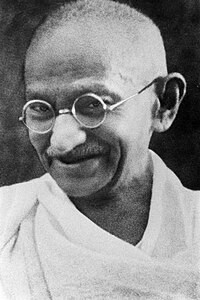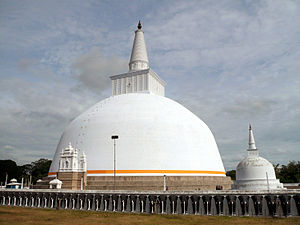Civics Buddhism and Sinhala
Friday, December 4, 2015
Tuesday, November 17, 2015
Wednesday, September 23, 2015
GRADE 7 CIVICS
Mahatma Gandhi
Mahatma Gandhi
From Wikipedia, the free encyclopedia
"Gandhi" redirects here. For other uses, see Gandhi (disambiguation).
| Mahatma Gandhi | |
|---|---|
 |
|
| Born | Mohandas Karamchand Gandhi 2 October 1869 Porbandar, Kathiawar Agency, British India[1] |
| Died | 30 January 1948 (aged 78) New Delhi, Delhi, India |
| Cause of death | Assassination by shooting |
| Resting place | Cremated at Rajghat, Delhi 28.6415°N 77.2483°E 28.6415°N 77.2483°E |
| Other names | Mahatma Gandhi, Bapu, Gandhiji |
| Ethnicity | Gujarati |
| Education | barrister-at-law |
| Alma mater | Alfred High School, Rajkot, Samaldas College, Bhavnagar, University College, London (UCL) |
| Known for | Leadership of Indian independence movement, philosophy of Satyagraha, Ahimsa or nonviolence, pacifism |
| Movement | Indian National Congress |
| Religion | Hinduism, with Jain influences |
| Spouse(s) | Kasturba Gandhi |
| Children | Harilal Manilal Ramdas Devdas |
| Parent(s) | Putlibai Gandhi (Mother) Karamchand Gandhi (Father) |
| Signature | |
 |
|
Born and raised in a Hindu merchant caste family in coastal Gujarat, western India, and trained in law at the Inner Temple, London, Gandhi first employed nonviolent civil disobedience as an expatriate lawyer in South Africa, in the resident Indian community's struggle for civil rights. After his return to India in 1915, he set about organising peasants, farmers, and urban labourers to protest against excessive land-tax and discrimination. Assuming leadership of the Indian National Congress in 1921, Gandhi led nationwide campaigns for easing poverty, expanding women's rights, building religious and ethnic amity, ending untouchability, but above all for achieving Swaraj or self-rule.
Gandhi famously led Indians in challenging the British-imposed salt tax with the 400 km (250 mi) Dandi Salt March in 1930, and later in calling for the British to Quit India in 1942. He was imprisoned for many years, upon many occasions, in both South Africa and India. Gandhi attempted to practise nonviolence and truth in all situations, and advocated that others do the same. He lived modestly in a self-sufficient residential community and wore the traditional Indian dhoti and shawl, woven with yarn hand-spun on a charkha. He ate simple vegetarian food, and also undertook long fasts as a means of both self-purification and social protest.
Gandhi's vision of an independent India based on religious pluralism, however, was challenged in the early 1940s by a new Muslim nationalism which was demanding a separate Muslim homeland carved out of India.[7] Eventually, in August 1947, Britain granted independence, but the British Indian Empire[7] was partitioned into two dominions, a Hindu-majority India and Muslim Pakistan.[8] As many displaced Hindus, Muslims, and Sikhs made their way to their new lands, religious violence broke out, especially in the Punjab and Bengal. Eschewing the official celebration of independence in Delhi, Gandhi visited the affected areas, attempting to provide solace. In the months following, he undertook several fasts unto death to promote religious harmony. The last of these, undertaken on 12 January 1948 at age 78,[9] also had the indirect goal of pressuring India to pay out some cash assets owed to Pakistan.[9] Some Indians thought Gandhi was too accommodating.[9][10] Nathuram Godse, a Hindu nationalist, assassinated Gandhi on 30 January 1948 by firing three bullets into his chest at point-blank range.[10]
Indians widely describe Gandhi as the father of the nation.[11][12] His birthday, 2 October, is commemorated as Gandhi Jayanti, a national holiday, and world-wide as the International Day of Nonviolence.
Tuesday, September 22, 2015
BUDDHISM
රුවන්වැලිසෑය
පටුන
සුවිශේෂීත්වය
දළදා වහන්සේ ලක්දිවට වැඩමකරවීම තෙක් රුවන්වැලිසෑය ලක්දිව වඩාත්ම පූජනීය ශාරීරික චෛත්යය විය. පසුව එම ස්ථානය දළදා වහන්සේට සහදළදා මාලිගා වලට හිමිවිය. දැනුදු මෙය ශ්රී ලංකාවේ වඩාත්ම පූජනීය දාගැබ වේ.භෞතික ලක්ෂණ
උසින් අඩි 300ක් (මීටර් 92) සහ අඩි 950ක (මීටර් 292) විෂ්කම්භයකින් යුක්ත වන මෙය ලෝකයේ දැනට පවතින උසම ස්මාරක අතරින් එකක් වේ. වාස්තු විද්යාත්මක ගුණාංග සහ ආශ්චර්යවත් බව නිසා ලොව පුරා බෞද්ධ ජනතාව අතර පූජනීය තත්වයට පත්වී ඇති ස්ථූපයකි.අන්වර්ථ නාම
- රත්නමාලි සෑය
- මහා සෑය
ශාරීරික ධාතු
සම්බුද්ධ පරිනිර්වාණයෙන් පසුව රටවල් අටක නරපතියන් විසින් සෑම රටකටම ධාතූන් වහන්සේලා නැලි දෙක බැගින් ගෙනනොස් ස්ථූපවල නිදන් කරවා වන්දනාමාන කරන ලදී. රාමාගම ග්රාමයේ නිදන් කර තිබූ ධාතූන් වහන්සේලා සහිත නැලි දෙක බුදුන් වහන්සේගේ අධිෂ්ඨානයට අනුව රුවන්වැලි මහා ස්ථූපයේ නිධාපිත කරන්නට නියම කෙරිනි. ඇසළ පුන් පොහෝ දින උත්තරාසීහ නැකතින් මහා ස්ථූපයේ ධාතු නිධානය කිරීමට නිල උත්සවයක් සංවිධානය කළ දුටුගැමුණු රජතුමා, පුන් පොහෝ දිනට පෙර දින සංඝ රත්නය මුණගැසී වැඳ නමස්කාර කොට, පසු දිනය ධාතු නිධාපිත කිරීමට සූදානම් කර ඇති බවට මතක් කරමින් ධාතූන් වහන්සේලා රැගෙන එන ලෙස ඉල්ලා සිටියේය.සංඝයා වහන්සේගේ විධානයෙන් පසුව සෝඋත්තර නම්වූ අධුනික රහතන් වහන්සේ සෘද්ධි බලයෙන් ධාතූන් වහන්සේලා රැගෙන වැඩම කළහ. ඉන් ඉක්බිති සංඝයා වහන්සේගෙන් ධාතූන් වහන්සේලා පිළිගත් දුටුගැමුණු රජතුමා, එය රත්රන් මංජුසාවක බහා තම හිස මතට ගෙන, අනේක විධ දක්ෂිණ හා උපහාරත්, දිව්ය සහ බ්රහ්මයන්ගේ ගරු බුහුමන් මධ්යයේ ස්වර්ණමය මණ්ඩපයෙන් පිටත් විය.ඔහු, තුන්වරක් ධාතු මැදිරිය වටා පැදකුණු කොට නැගෙනහිර දිශාවෙන් ඇතුල් වී උතුරු දෙසට මුහුණලා පිළියෙල කර තිබූ රිදී සයනයක ධාතු මංජුසාව තැන්පත් කළ විට බුදුරජාණන් වහන්සේගේ අධිෂ්ඨාන බලයෙන් සිංහසෙයාවෙන් බුදු පිළිරුවක් හටගෙන සියලුම ධාතූන් වහන්සේලා ඒ ප්රතිමාව තුල නිධන්ගත වූහ. ධාතූන් වහන්සේලා රුවන්වැලි මහා ස්ථූපයේ නිධන්ගත වීම සම්පූර්ණ වූ පසු, උත්තර සහ සුමන සාමණේරයන් වහන්සේලා විසින් පියනක් ලෙස පසුව පාවිච්චි කිරීම සඳහා කලින් සඟවා තිබූ ගල් ආවරණයකින් ධාතු ගර්භය වසා දමන ලදී."ධාතු ගර්භය භූමිකම්පාවකින් වුවද නොසෙල්වේවා ; එදින පූජා කළ පිච්ච මල් ආදී මල් වර්ග ගෞතම බුද්ධ ශාසනය අවසන් වන තුරු මැල නොවේවා;ගිතෙල් වලින් දල්වන ලද පහන් නොනිමේවා; සඳුන් සහ සුවඳ විලවුන් මිශ්ර කරන ලද පස් වියළී නොයේවා; ධාතු ගර්භයේ එකදු සීරීමක් වත් නොවේවා; පූජා කළ රත්රන් භාණ්ඩවල මල නොබැඳේවා" මේ සියලු ප්රාර්ථනා මෙම උත්සවයට වැඩම කර සිටි රහතන් වහන්සේලාගේ අධිෂ්ඨාන බලයෙන් සඵල විය.ඔවුන් "සතුරන්ට වත් මේ ධාතු ගර්භය දකින්නට පවා නොලැබේවායි" අධිෂ්ඨාන කළහ. තවද දුටුගැමුණු රජතුමාගේ නියෝගය පරිදි බුදුරජාණන් වහන්සේගේ ධාතුන් වහන්සේලා ඇතුලත් රන් හා රිදී මංජුසාද තවත් බොහෝ වස්තූන්ද ධාතු ගර්භය මත නිදන් කෙරිණි.
වන්දනා ගාථාව
සයිංසු යස්මිං සුගතස්ස ධාතු
නිම්මාය රංසුජ්ජල බුද්ධ රූපං
සුවණ්නමාලති පතිතනාමං
වන්දාමහං ඵුපවරං මහඝ්ගං
Thursday, September 17, 2015
Wickramasinghe; the typical
storyteller of the Sinhalese Novel
He is a good storyteller, an
inspiring thinker, and a good philosopher as proved in his work, which is more
than hundreds of books and thousands of paper articles. Though Wickramasinghe
is considered in the academic crowd, as a good philosopher, he is most popular
as the great novelist/ author/ writer of Sinhalese literature arena.
Rohini (1929)
Ape Gama (1940)
Gamperaliya (1944)
Madol Duuwa (1947)
Yuganthaya (1949)
Viragaya (1956)
Kaliyugaya (1957)
Upandaa Sita (1961)
Kaluwara Gedara (1963)
Bawa Tharanaya (1973)
Madol Duuwa (1947) – As the most popular book of Martin Wickramasinghe,
it plays the role of the most abundant Sri Lankan novel. Upali Giniwelle and
his servant friend Jinna play the main roles of this novel as notorious
youngsters who explore their lives outrunning their parents. After make off
from home Upali and Jinna find the isolated small island Madol Duuwa, situated
in the middle of Koggala tank. They cultivate this land and gradually become
standard businesspersons. The story of these two youngsters has been created by
Wickramasinghe as an adventure which enchants the reader till the end. More
than a half a century of prints have been published so far as it is highly
accepted by the Sri Lankan litterateurs.
Rohini (1937) – is the book that firstly written out of these 10
books which carries a historical epic. The legendry affair between Athula and
Rohini is the subject of this novel. Athula, a war hero from the Army of King
Dutugemunu, falls in love with the young princess Rohini, whose father is a minister
of King Elara. Princess Rohini is also proposed to her father’s diplomatic
friend Mithra, from the same Elara’s party.Yet there is a romantic story flows
through the novel Wickramasinghe tend to emphasis the critical political issues
hidden behind as well. The novel is also recommended as the Sinhalese
Literature fiction for the Junior School Certificate Examination in 1937.
Ape Gama (1940) – the typical soulful explanation of the rural life
and the atmosphere is also one of the prime books written by Martin
Wickramasinghe. When reading this book you will feel how smoothly he has
described the every single experience of his village life. Even though this is
mostly identified as a children’s book it entertains the other readers as well.
I highly recommend this book for all kinds of readers, as they can enjoy it
thwarting all barriers.
Kaliyugaya (1957) – the second of the seriescan be identified as the
best explanation ever appeared in explaining the social class transition during
the post- colonization stage. Social uplifting of the newly formed social class
consists of feudalistic Nanda and lower middle class Piyal with the presence of
the money factor is indicated in this particular novel. Therefore it would be
really interesting to you to understand what has really happened in the Sri
Lankan context during the post- colonization period.
Yuganthaya (1949) – as the final part of the trilogy is the best book
that shed light on the collapsing of this upper middle class Sri Lankan society
and emergence of a new capitalistic society. Based on the social struggle
between upper middle class Saviman Kabalana (Son- In- law of Piyal and Nanda)
and the venture capitalist Wiharahena from Deniyaya this novel flows under
numerous social disputes. This novel ends with the formation of modern
political tradition which consists of English spoken, foreign educated
capitalistic people who had the socialistic ideas, like Malin Kabalana. And
also Yuganthaya explains the polarization of the human political and social interests
based on their political ideology using the characters Malin Kabalana and
Aravinda Wiharahena. If you are interested in Sri Lankan political transitions
you should read this book with reference to the day to day political
stereotypes.
Viragaya (1956) -is the novel that considered as one of the best
novels that explain persons’ obscure characteristics ever written in Sri Lankan
modern literature. Aravinda, Bathi and Sarojini are the main characters of the
novel. In Viragaya, Wickramasinghe tries to explain their characteristics which
are ambiguous, mystic and complicated. Aravinda is indisputably accepted as the
typical Sri Lankan youth character that appears in a novel.
Upandaa Sita (1961) – Autobiography of late Martin Wickramasinghe is one
of the other books that you should read. Even though it is a personal
experience book, it is highly recommended as a masterpiece to the life style
management. Experience from his village, through the carrier as a journalist
and most importantly influence of own experience in his literature work is
included in this biography. Therefore it is most similar to a Diary- novel such
as La Nuste by Sean Paul Sarthe.
Kaluwara Gedara (1963) – If you are interested more in the social class
struggle of Sri Lanka you might also need to read Kaluwara Gedara. Kaluwara
Gedara is too based on a rural family and its development during decades with
the presence of social, cultural, political and economic circumstances. As in
many works of Martin Wickramasinghe, this book is also keen in explaining the
social status of a certain period of the Post- colonization period, as one of
the heavy transitional period that appeared in Sri Lankan social history.
Bawa Tharanaya (1973) – is one of the most controversial novels which
caused a series of heavy arguments between scholarly traditions. It is mainly
based on the life of Prince Siddhartha, before and after of renunciation of
household life. Considering Lord Buddha as a human being that proven higher
ideological and philosophical values, Wickramasinghe tends to create his own
explanation about the Buddhist culture. Therefore this novel has been
confronted numerous arguments and stigmatizations by the conventional Buddhist
society. Yet it is argued by some of the scholars, it is undoubtedly accepted
by the readers as one of the practical readings about the Buddhist concepts.
- See more at:
http://studentlanka.com/2011/08/13/top-10-greatest-novels-of-martin-wickramasinghe/#sthash.w1XJhgbG.dpuf
Subscribe to:
Comments (Atom)








